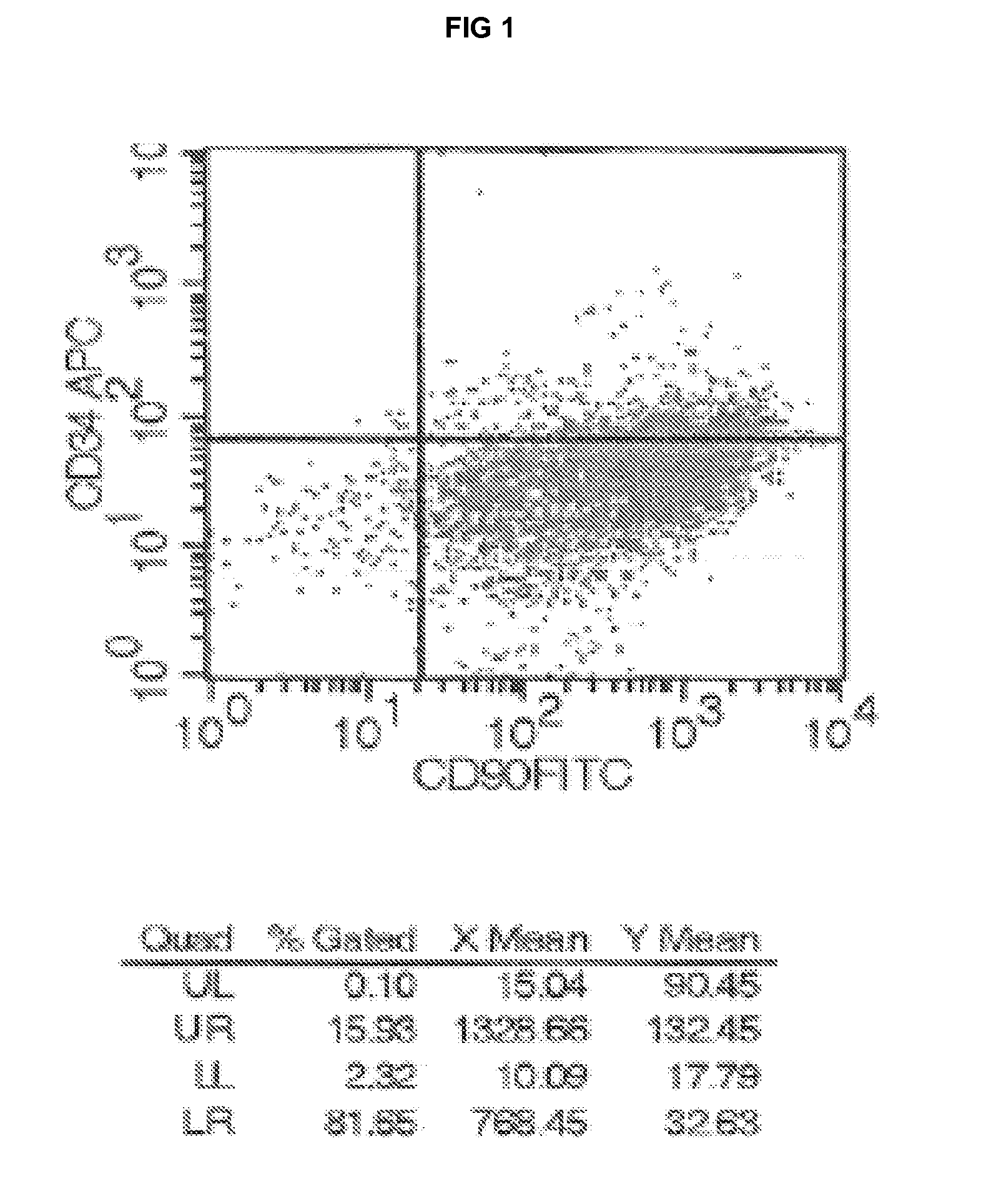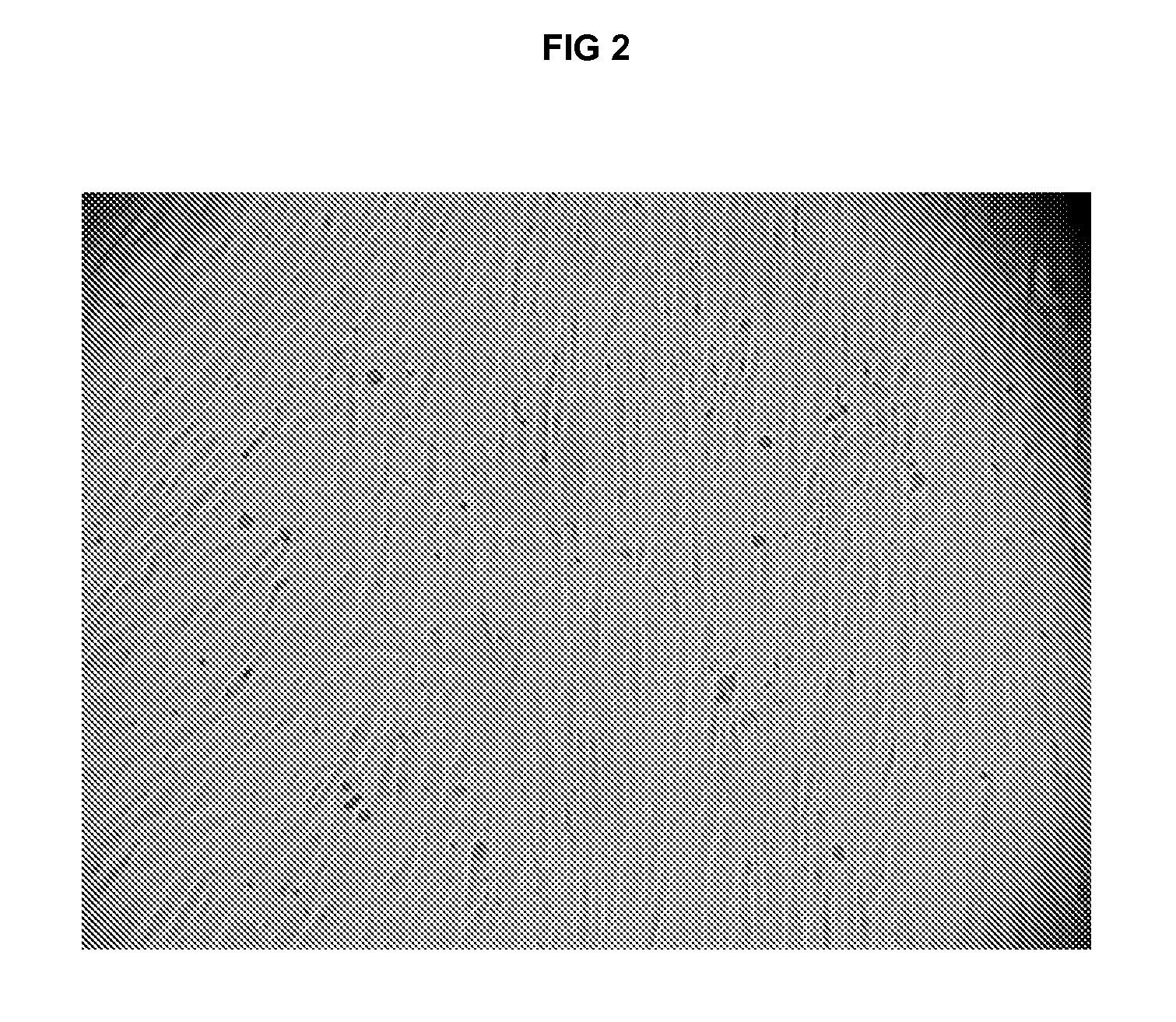Novel Mesenchymal Stem Cells and Bone-Forming Cells
a mesenchymal stem cell and bone-forming cell technology, applied in the field of cell phenotype and cell differentiation, can solve the problem that a large proportion of so-transplanted cells would not contribute to the formation of desired bone tissue, and achieve the effect of enhancing both osteogenic and pro-angiogenic characteristics
- Summary
- Abstract
- Description
- Claims
- Application Information
AI Technical Summary
Benefits of technology
Problems solved by technology
Method used
Image
Examples
example 1
[0121]Isolation and culture of bone marrow MSC. 100 ml of heparinized bone marrow (BM) was obtained from iliac crest of patients or from healthy volunteers. BM was mixed with phosphate-buffered saline (PBS, 2v:v) and layered on density gradient Ficoll solution. After centrifugation, mononuclear cells were harvested from the interface and washed twice in PBS. The cells were resuspended in DMEM medium supplemented with 20% plasma, optionally supplemented with FGF-2. The cells were plated at 1×107 cells / 175 cm2 flasks (tested range 1×105-1×109) and maintained in a 37° C. humidified atmosphere containing 5% CO2. The cells were allowed to attach for 1 to 4 days prior to an initial medium change, and subsequently cultured for time intervals as specified below.
[0122]Isolation of CD34 positive cells. After 14 days of standard mesenchymal culture (DMEM and plasma at 20%), approximately 1×108 cells were harvested and maintained in PBS. The whole cell population was then labelled with an APC-l...
example 2
[0131]The MSC cell population obtained as explained in Example 1 (“Isolation and culture of bone marrow MSC”) without cell sorting or growth factor stimulation expressed high levels of mesenchymal markers (CD90, CD105 and CD73), consistent with their mesenchymal origin. Haematopoietic CD34 surface molecule was expressed at low levels (usually between 5% to 15% of the whole population). ALP marker representing the bone potential of the cells was also highly expressed (Table 1 and 2). A third of the CD34+ cells were also CD90+(FIG. 1—a low and high level of expression of CD90 / CD34+).
TABLE 1Phenotypic markers of MSC (percentage of cells deemed positive by FACS)Whole cell populationCD90*CD34ALP#195% 4.3% 9%#292% 5.9% 11%#398%18.5% 6%#499% 3.1%7.8%#599% 7.3% 9%#697% 9.2%9.5%#785%15.8%8.7%*similar results are obtained for CD105 and CD73
TABLE 2Phenotypic markers of MSC (percentage of cells deemed positive by FACS)Whole cell populationNMeanSDALP117.916.6CD1051191.87.9CD9012...
example 3
CD34 Positive Cell Isolation
[0132]At the end of the first expansion step carried out as explained in Example 1 (“Isolation and culture of bone marrow MSC”) before cell sorting, the MSC cells were harvested off the flasks. The method of positive selection by flow cytometry sorting to isolate the CD90 / CD34+ population was used. Cells were first stained with a specific APC-coupled anti-CD34 antibody solution. Then the cell population was injected through a Becton-Dickinson fluorescence-activated cell sorter to isolate CD34 labelled cells from the population. The CD34+ cells were then collected in a phosphate buffer saline solution.
[0133]An aliquot of the cells was analysed to check the purity. Out of 1×108 initial cells, on average about 50×106 cells were sorted whom 15 to 90% were CD90 / CD34+ osteoprogenitors, corresponding to an enrichment of a factor of 10 to 30. These cells were further cultured under same conditions.
PUM
| Property | Measurement | Unit |
|---|---|---|
| time intervals | aaaaa | aaaaa |
| composition | aaaaa | aaaaa |
| affinity adsorption | aaaaa | aaaaa |
Abstract
Description
Claims
Application Information
 Login to View More
Login to View More - R&D
- Intellectual Property
- Life Sciences
- Materials
- Tech Scout
- Unparalleled Data Quality
- Higher Quality Content
- 60% Fewer Hallucinations
Browse by: Latest US Patents, China's latest patents, Technical Efficacy Thesaurus, Application Domain, Technology Topic, Popular Technical Reports.
© 2025 PatSnap. All rights reserved.Legal|Privacy policy|Modern Slavery Act Transparency Statement|Sitemap|About US| Contact US: help@patsnap.com



